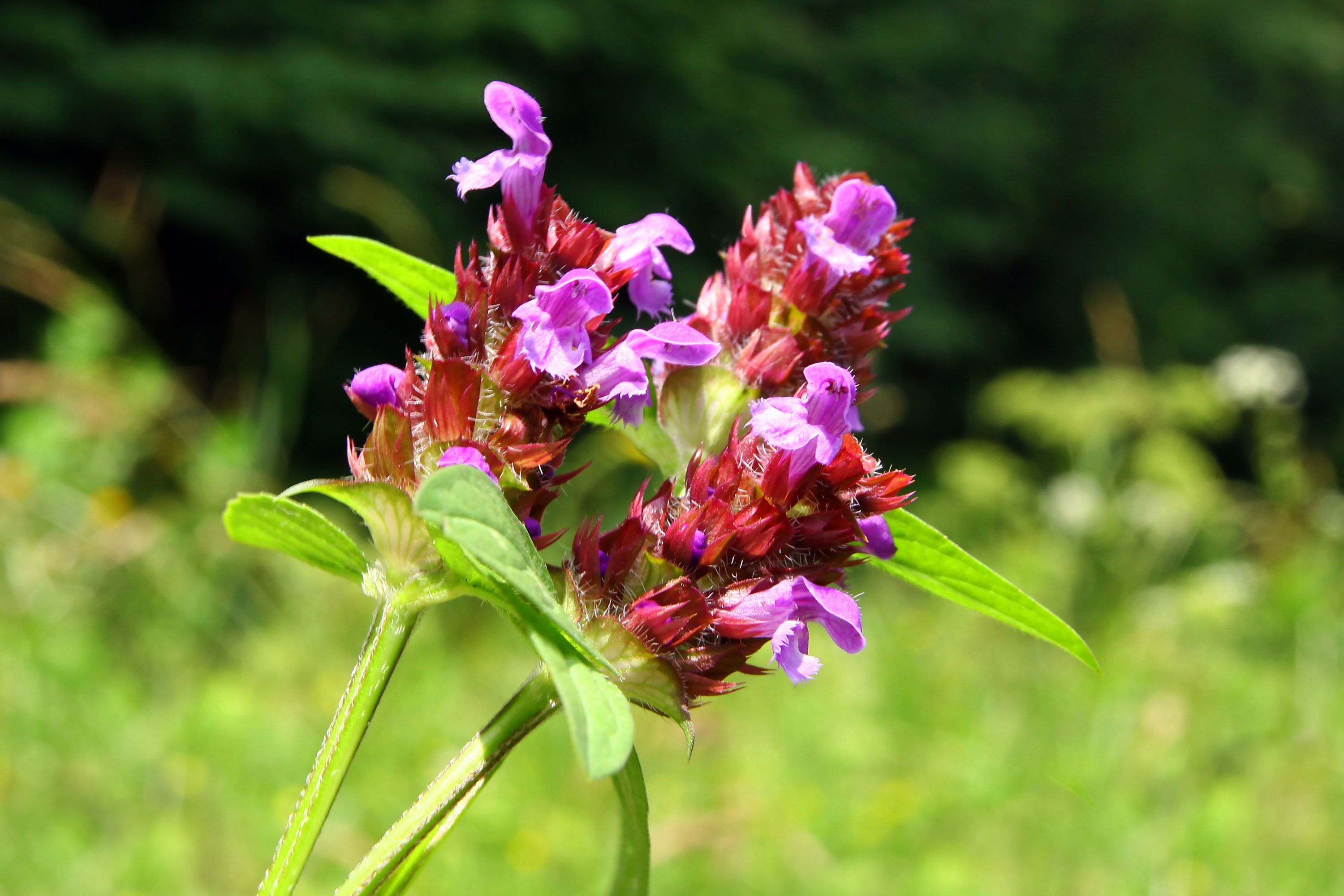Heal-all
(Prunella vulgaris)

Description
Prunella vulgaris, commonly known as self-heal or Heal-all, is a herbaceous perennial plant that belongs to the mint family, Lamiaceae. It is native to Europe and Asia, but it has also naturalized in North America, where it is considered a weed. This versatile plant has been used for centuries in traditional medicine for its numerous health benefits, and it is also a popular ornamental plant due to its attractive purple flowers and low-maintenance requirements. Description and Taxonomy Prunella vulgaris is a low-growing plant that typically reaches a height of 15-30 cm (6-12 in) and spreads outwards by stolons to form dense mats. The leaves are lance-shaped, 2-8 cm (0.8-3.1 in) long, and arranged opposite each other along the stem. The stem is square-shaped and hairy, and it produces spikes of tubular purple flowers that bloom from late spring to early autumn. The flowers are 1-2 cm (0.4-0.8 in) long and attract a variety of pollinators, including bees, butterflies, and hummingbirds. Prunella vulgaris is a member of the genus Prunella, which comprises about a dozen species of small perennial herbs found in temperate regions of the Northern Hemisphere. The genus name Prunella is derived from the Latin word prunellus, which means little plum, and refers to the plant's fruit, which is small and dark-colored. The species name vulgaris means common, and reflects the widespread distribution of the plant. Distribution and Habitat Prunella vulgaris is found throughout Europe and Asia, from Scandinavia to the Mediterranean and from the Atlantic coast to China and Japan. It grows in a variety of habitats, including grasslands, meadows, hedgerows, woodland edges, and disturbed areas such as roadsides, railway embankments, and waste grounds. In North America, self-heal has become naturalized in many regions and is considered a weed, particularly in lawns and turf grass. Cultivation Prunella vulgaris vulgaris, commonly known as self-heal, is a hardy plant that is easy to grow and maintain. Here are the steps to cultivate this plant: Choose a location: Self-heal can grow in a variety of soil types but prefers moist, well-drained soil. It can tolerate both full sun and partial shade, so choose a location that gets at least 4-6 hours of sunlight a day. Prepare the soil: If your soil is heavy or clay-like, add some organic matter such as compost or well-rotted manure to improve drainage and soil structure. Plant the seeds: Self-heal can be propagated by seed, which should be sown in the spring or fall. Sow the seeds thinly, covering them with a light layer of soil. Water the soil gently but thoroughly. Water regularly: Self-heal prefers moist soil, so water the plants regularly, especially during dry spells. Avoid overwatering, as this can lead to root rot. Mulch: Mulching around the plants can help conserve moisture and suppress weeds. Use a layer of organic material such as shredded leaves or straw. Fertilize sparingly: Self-heal does not require heavy fertilization. A light application of compost or a balanced organic fertilizer in the spring can provide the necessary nutrients. Prune as needed: Self-heal can become invasive if left unchecked, so prune it back as needed to control its spread. Prune back after flowering to encourage new growth. Propagate by division: Established self-heal plants can be divided in the spring or fall. Dig up the clump and carefully separate the roots, replanting them in their new location. By following these simple steps, you can successfully cultivate Prunella vulgaris vulgaris in your garden. This versatile plant not only adds beauty to your landscape but also offers potential health benefits. Uses Self-heal has a long history of use in traditional medicine, where it is valued for its antiviral, antibacterial, anti-inflammatory, and diuretic properties. It has been used to treat a variety of ailments, including sore throats, colds, flu, wounds, and skin disorders. The plant contains a range of biologically active compounds, including flavonoids, phenolic acids, triterpenoids, and iridoid glycosides, which are responsible for its therapeutic effects. In addition to its medicinal properties, self-heal is also used as a food and beverage ingredient. The leaves and flowers can be eaten raw or cooked and are high in antioxidants and vitamin C. They can be added to salads, soups, stews, and teas. Self-heal is also used as a natural dye for textiles and as a source of nectar for honeybees. Conclusion Prunella vulgaris, or self-heal, is a versatile plant with a long history of use in traditional medicine and a range of other applications. It is easy to cultivate and requires little maintenance, making it a popular choice for gardeners and landscapers. While more research is needed to fully understand its therapeutic properties, self-heal has shown promise as a natural remedy.
Taxonomic tree:







